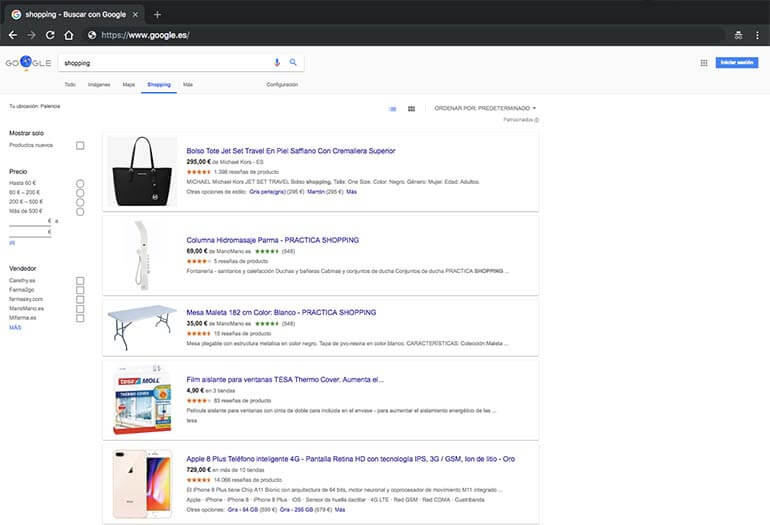

Everybody agrees that online commerce has opened up new sales and communication channels for manufacturers. In this sea of opportunities, beyond the ecommerce itself, manufacturers find the ideal place to independently boost their sales.
Google Shopping is more than just a marketplace. In fact, we should not include it in this category. Google itself defines this branch of business as a price comparison site. With its sales platform Google has managed to merge the bidding system that it maintained for advertisements (now Ads) with a showcase of Amazon-style products.
Undoubtedly, this is a whole new possibility to be taken into account when talking about the relationship between manufacturers and retailers in the online world. However it must be used well to get the most out of it. So, how to take advantage of the possibilities offered by Google Shopping if you are a brand or manufacturer?
First of all, you should know how the bidding system works. Already, at the beginning of 2018, it was foreseen that Google Shopping would allow its users to enjoy a lower CPA (cost per acquisition) thanks to the lower competition that still exists in this market. However, before launching into the void, it is appropriate to specify the costs of the campaign. To define a fair price for each of your appearances, analyse according to CPC or CPL which should be the maximum range that will allow you to achieve benefits. Only this way will you work safely. Once the campaign is rolling, you can start making the necessary adjustments.
Marketeers of all the countries where Google Shopping is present theorise and put into practice different resources when executing their actions, it is precisely because both the advance of technology and the opening of the market makes fluctuations occur almost constantly. An expert in sales & marketing will be your key support to start selling on Google Shopping.
Without a doubt, one of the main advantages of Google Shopping is that the sale and the type of advertisement depend on the seller. In this way, it will always be in your power to set the acceptable costs, design the CTA’s and optimise each of these aspects so that they reach the online store of your brand. In the same way that Google Ad’s works, Google Shopping has a tool that will help you calculate the ROI of each of your actions on your platform.
Of course, we must be cautious (and somewhat shrewd) and combine into our equation both of these Google parameters so that your business comes out profitable and also the price of our competitors products in Google Shopping.
As we get the idea, in highly competitive sectors, with highly sought-after products, bids will be higher, and that's not why the price of the product has to be higher. In the end the user will want to choose from among the most interesting available options, both for the price factor and for the brand confidence and attractiveness of the offer.
Finally, you should take into account some extra tips to make a more attractive ad on Google Shopping:
- Create a good title that attracts the attention of your audience: keywords, calls to action, etc.
- Include your ratings module. Trusted sites, valued by other users, generate more sales.
- Work with eCommerce images. It’s always a good hook for potential users to land in your store. The product image must agree with what the user will find when he clicks, clean and of high quality.
Regarding campaign management, we recommend that you use personalised labels to maximise the investment in each of them throughout the year. In this way you clearly identify the season to which the product belongs, if on offer, the profit margin you have, etc.
In short, Google Shopping continues to make its way. For the moment, the changes happen quite often, since it looks for ways to consolidate in the market. Undoubtedly, the added value offered to brands and manufacturers will be one factor that allows its success in the saturated online environment.
Find out how Minderest can take your business to the next level.
Contact our pricing experts to see the platform in action.
Related Articles

AI Agents and Holiday Season: How to Adapt Your Pricing Strategy
Holiday season planning used to revolve around creative campaigns, emotional storytelling, and optimizing the user experience. However, a silent revolution is changing the rules of the game. The rise...
How Surveillance Pricing Works and Its Applications for Your Business
The term "Surveillance Pricing" might conjure images of corporate espionage and price manipulation. However, this initial perception hides one of the most sophisticated and powerful strategies in...